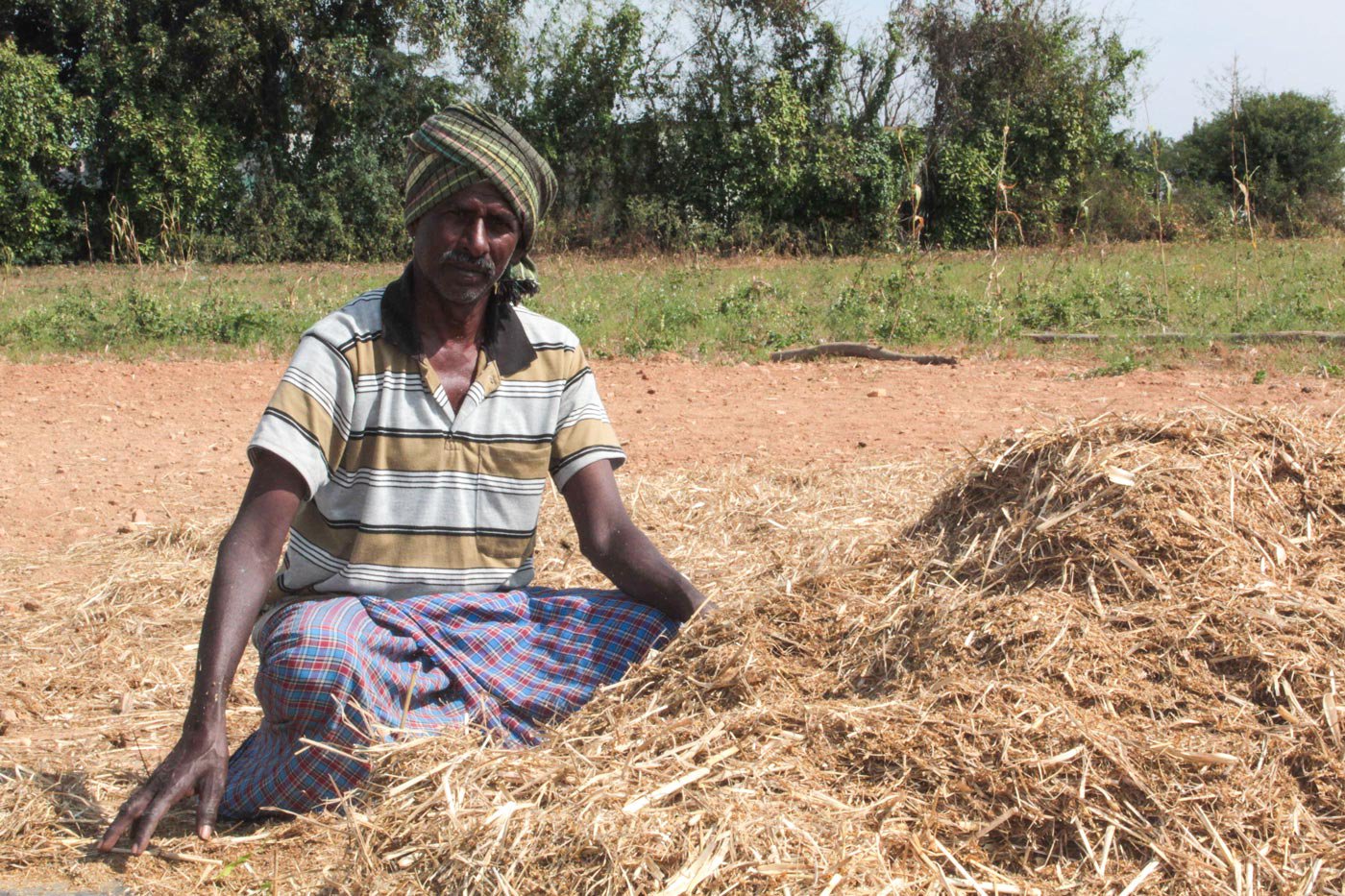It’s January and the fields in Hosur taluk of Tamil Nadu are piled with the harvested crop to dry out. Farmers say they have left the ragi to dry in the sun for almost a week so that the nutrients from the green stem accumulate in the ragi seeds.
A few men are standing under the shade of a small, dilapidated shed to protect themselves from the harsh sun. Among them is 52-year-old Narayanappa dressed in a blue khadi dhoti, a light towel over his head to shield him from the sun. A resident of Palavanapalli village in the Krishnagiri district of Tamil Nadu, he has rented 1.5 acres of land on which he cultivates mostly ragi and hurali kalu (horsegram) after the rains. Hosur, a busy industrial hub, is an hour’s walk from his village.
*****
“Farming has always been my family’s profession and I was forced to take it up at a young age. One of the advantages of growing ragi is that it is rain-fed and so no external source of irrigation is required. Also, it doesn’t attract any pests. I sow the seeds between April and May as it gives me more yield. It can be harvested five months after it has been sowed. Threshing is done manually. I am able to harvest about 13-15 bags of ragi, each weighing 100 kgs. We keep some for ourself and the rest we sell at 30 rupees for a kilo. I reinvest 80 per cent of what I earn into the next harvest.

Narayanappa with the harvested ragi from his field at Palavanapalli village, Hosur taluk, Tamil Nadu
We face many challenges during the growing season. Flocks of peacocks and groups of monkeys ruin the crop.If I'm not careful, the whole crop can be destroyed overnight. We are always at the mercy of rains, cold weather, chill winds; Unpredictable rains often take away the fruits of our hard labour.
It is impossible to be a full-time farmer and earn enough for a living.I spend anywhere between 35,000 to 38,000 rupees and I earn around 45,000 rupees. It works out to around 10,000 rupees a season. I end up having to take loans as this isn’t enough for our daily expenses.
I spend almost all my money in preparing land for the next harvest, pay water tax and to settle my loans and debts.
I am barely left with 5,000 rupees to run my family for the next 5 months. My wife works as a daily- wage worker, and my son supports me in agriculture. I cannot educate him due to lack of money. I get labour for harvesting and weeding in my village and I pay about 400 rupees as daily wages.

Narayanappa (top) covers the ragi with straw to keep it dry
I have also invested in two cows of a native breed. These cows produce roughly 10 litres of milk a day from which I earn around 2,000 rupees a month from selling the milk, after feed and care costs.
I am able to earn very little money and I am not able to meet the basic needs of my family. For the past 20 years, we have been asking the panchayat for help. Although eight leaders have changed, there has been no noticeable change in our lives. The government is resistant to increase the amount of subsidy when the crops fail due to natural calamities.
Despite all the struggles I find joy in working in the open, surrounded by fields. I have a happy relationship with my neighbours.”
This story was reported by students Sahana, Pranav Akshay, Dhivya, Usha M.R. from TVS Academy in Hosur, Tamil Nadu. They participated in a workshop with PARI.



